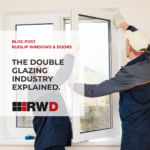Double glazing: the industry explained.
Our handy quick guide about the double glazing and conservatory industry. The term double glazing refers to windows and doors that are glazed with sealed units – two panes of glass with a spacer bar around the edge. The edge is sealed with a special sealant (usually today known as a “warm edge spacer”) to […]

